The last oyster shack in Wellfleet was boarded up for around 50 years when metalworker and builder Steve Swain finished designing the Pearl restaurant across from the marina. Captain Higgins, the restaurant that preceded Pearl at that site, had been using the adjacent shack for storage for years.
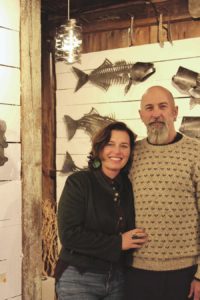
“There wasn’t an ounce of natural light in there, other than what comes through the cracks in the walls,” Swain remembers. The building was set to be condemned, but he and his wife, Sarah, recognized the historical significance of this last structure of its kind on Wellfleet Harbor. “I took it under my wing and did the renovation on my own,” he says, “and Sarah and I opened the gallery there.”
Swain grew up in Scituate and summered on the Cape until he moved after college to a historic Centerville farm, where he lived until his family moved to Harwich in 2011. “We lived in an old barn that’s very similar to the gallery,” he says. He credits the 18th-century structure with sparking his interest in renovating old houses.
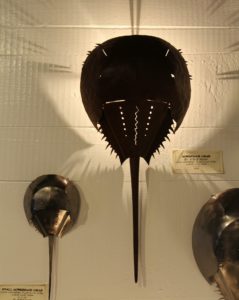
Before he got into the gallery world, Swain mostly designed and built restaurants. He studied art at UMass Amherst and minored in metalwork. His sea creature sculptures, horseshoe crab lamps, and fishbone sconces are now featured in his Frying Pan Gallery and in restaurants he’s designed, including Pearl. The signs for both the restaurant and gallery, covered in deep amber layers of rust, are his creations, too.
Swain got his metalworking start living in Key West, Fla., where he repurposed the roofs of vans for sculptures. But “the paint and headliner adhesive were really nasty when it burned,” he says, “so I stopped doing that.”
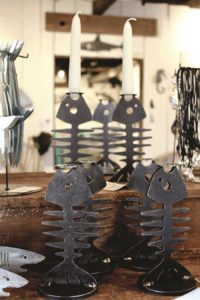
After years of renovating around New England, “I acquired a lot of what I call ‘inventory,’ ” Steve says. Prompted by a chuckle from Sarah, he admits, “Other people call it junk.” The venture wasn’t fruitless, though — the red sliding doors in front of the Frying Pan came from a friend’s barn in New Hampshire.
The couple have run the gallery jointly since 2009, with Steve on design and production and Sarah managing the business and retail operations. Originally, they anticipated the shack would be an interesting display space for Steve’s metal sea creatures. Today, Frying Pan Gallery is home to over 20 other local artists’ work.
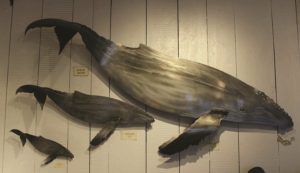
“Every artist we have in there, we know personally,” says Sarah. “We really value who they are as people, and as artists. It’s awesome to have a retail location where everything you look at you know the person who created it. It gives meaning to everything in there.”
Steve is perhaps best known for his schools of steel menhaden, or “pogy” fish. At his home workshop in Harwich, he cuts each fish individually with a plasma cutter, best described as “an electric torch that cuts really fine lines.” Customers can buy fish in groups for $10 each, or individually for $12.
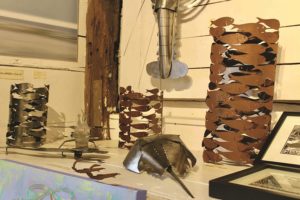
“I love that people can use Steve’s fish to make their own artwork,” says Sarah. Often, customers will add to schools over time. Some order them according to the size of their families. No two schools end up looking the same.
“It’s really important for us for art to be approachable and attainable for people who have a variety of budgets,” says Sarah. Their gallery houses everything from seascape murals to shell-studded jewelry to Steve’s new shark-shaped bottle openers — as eclectic as the town itself.
